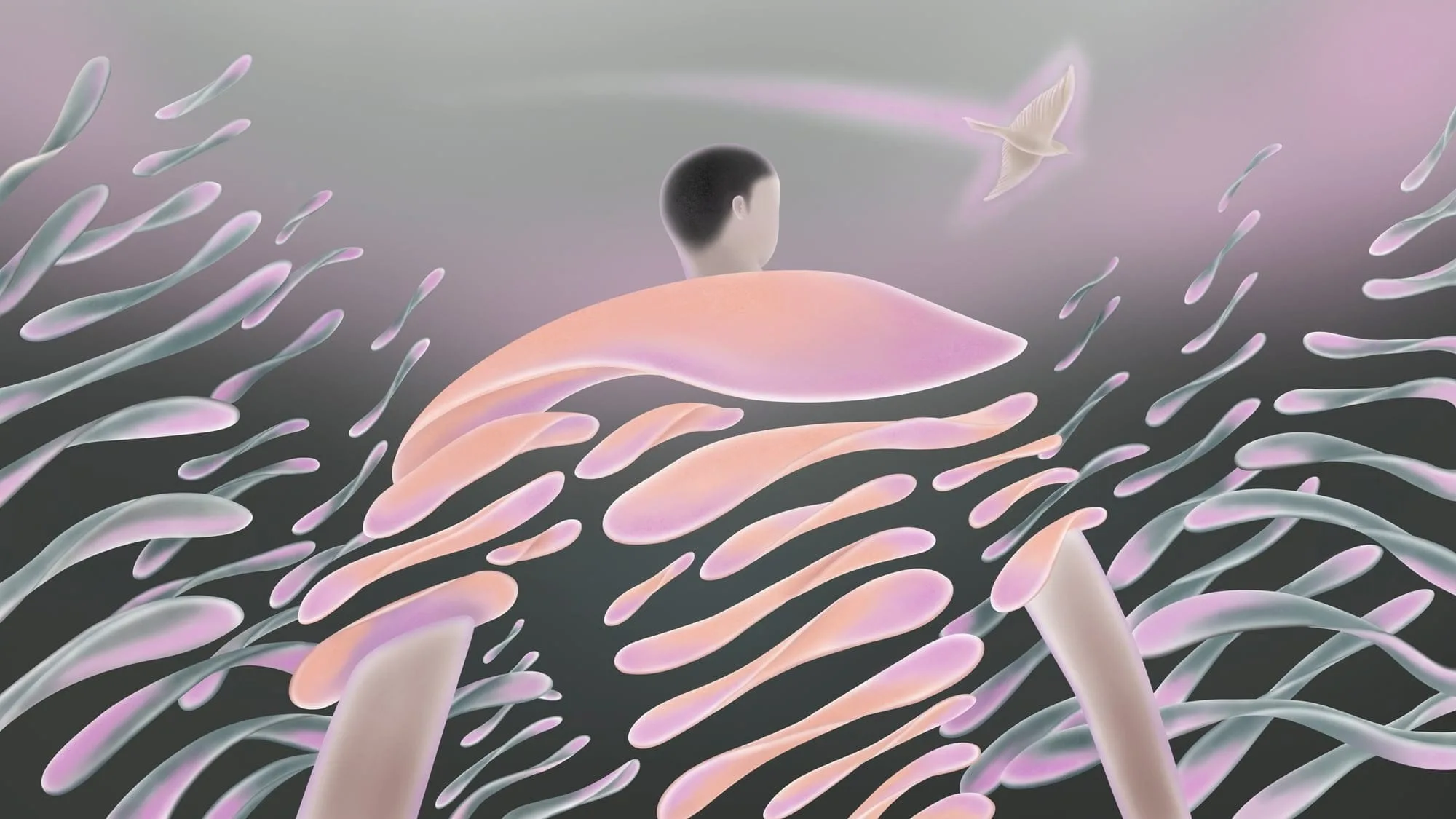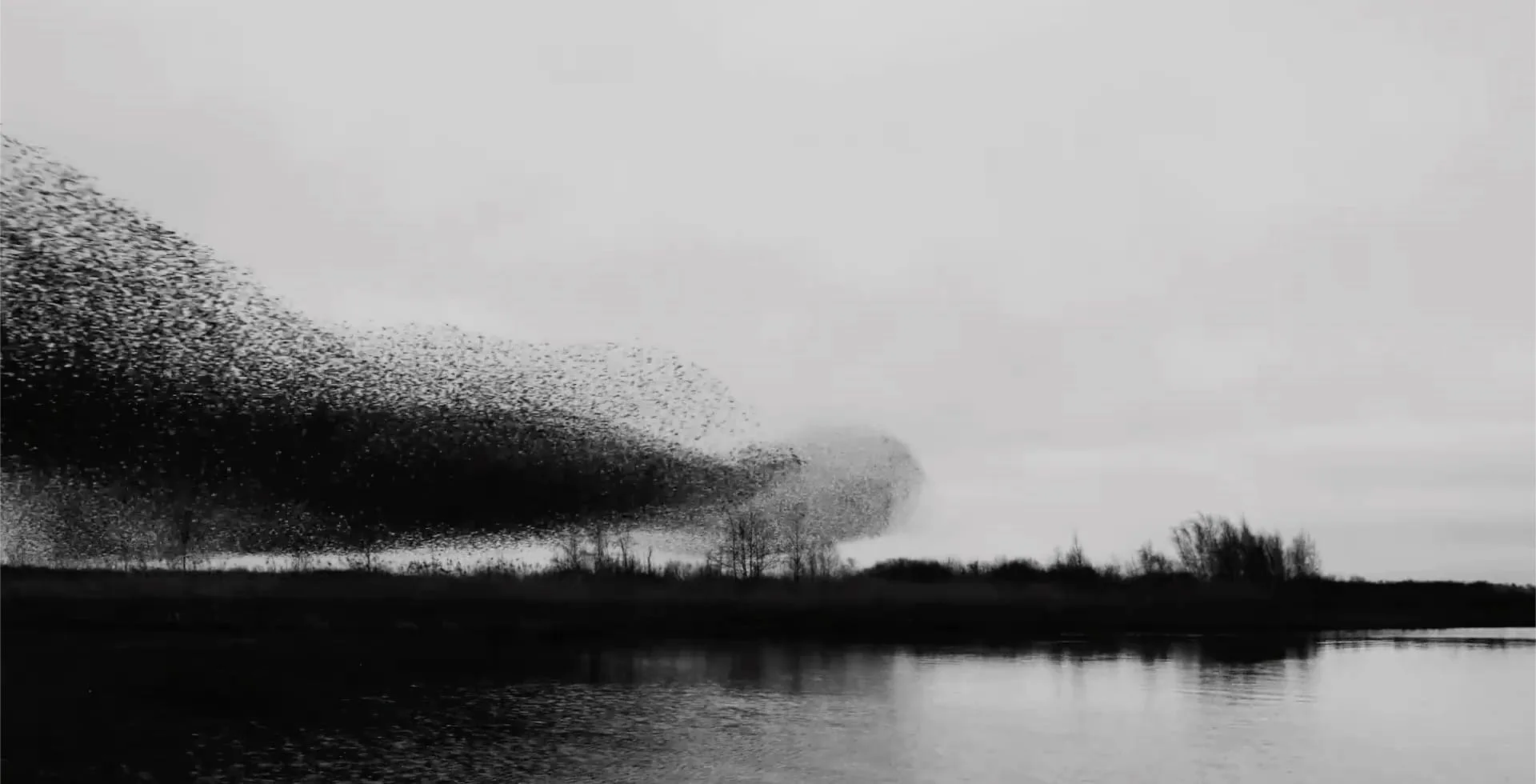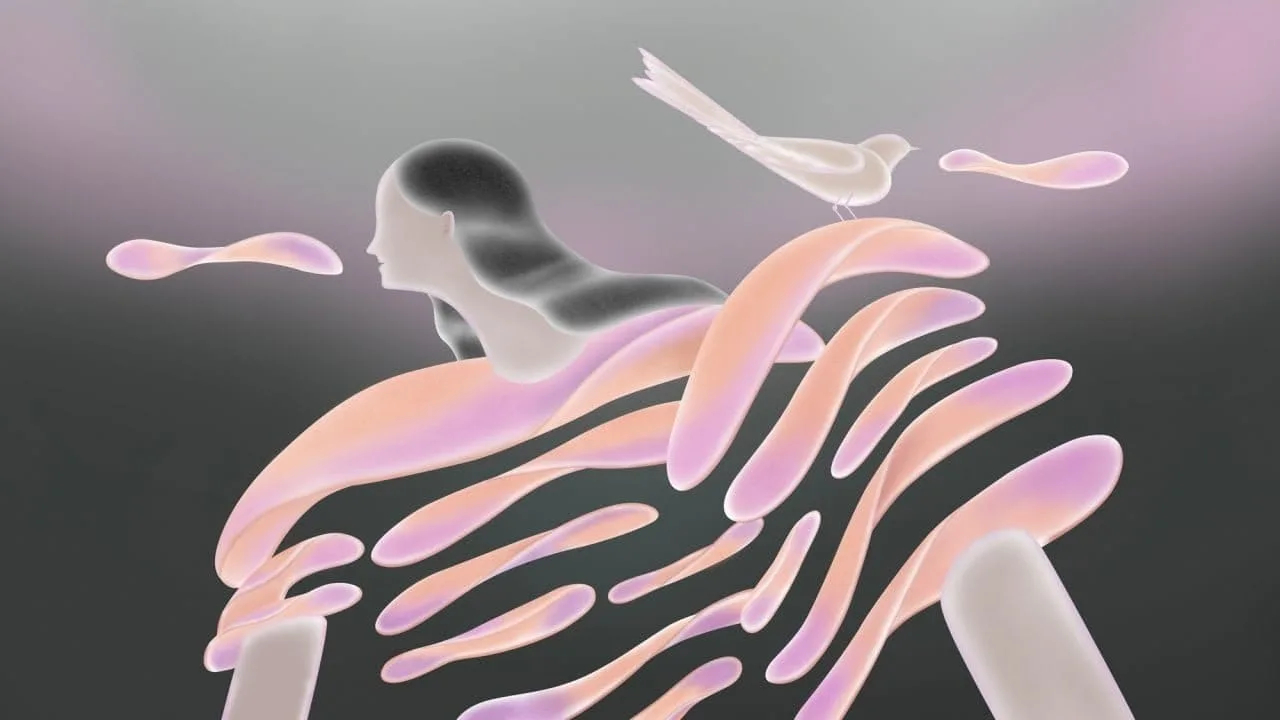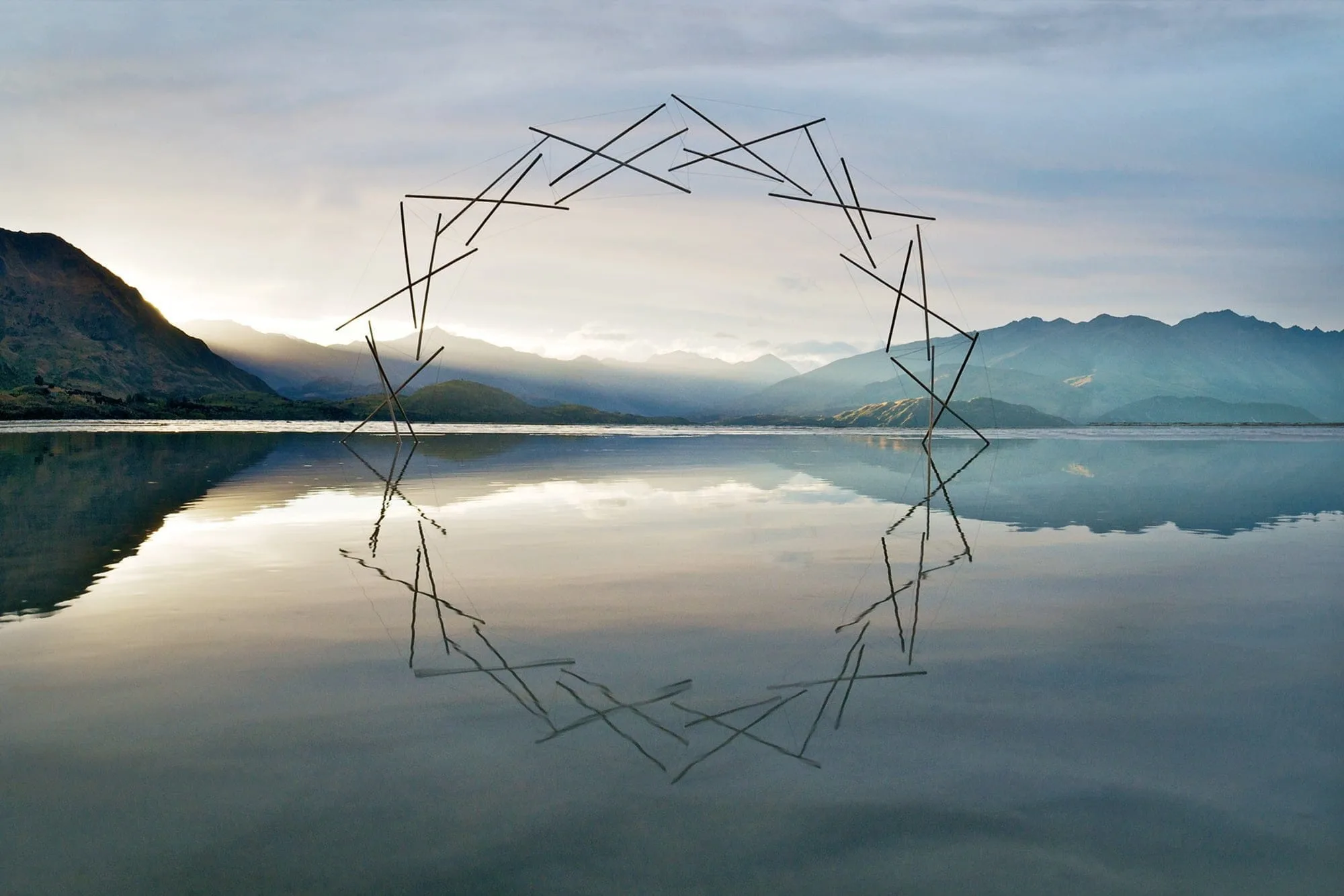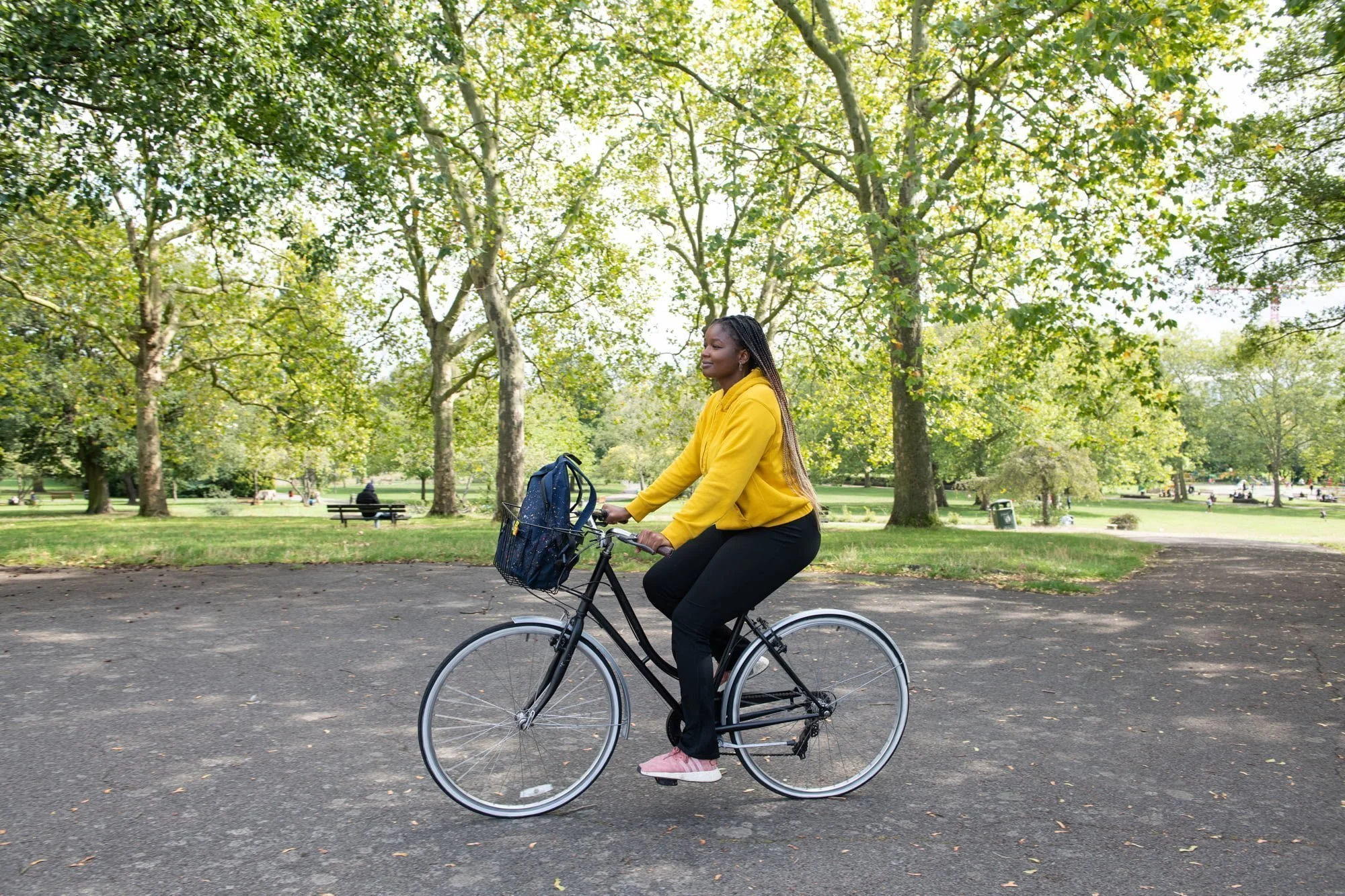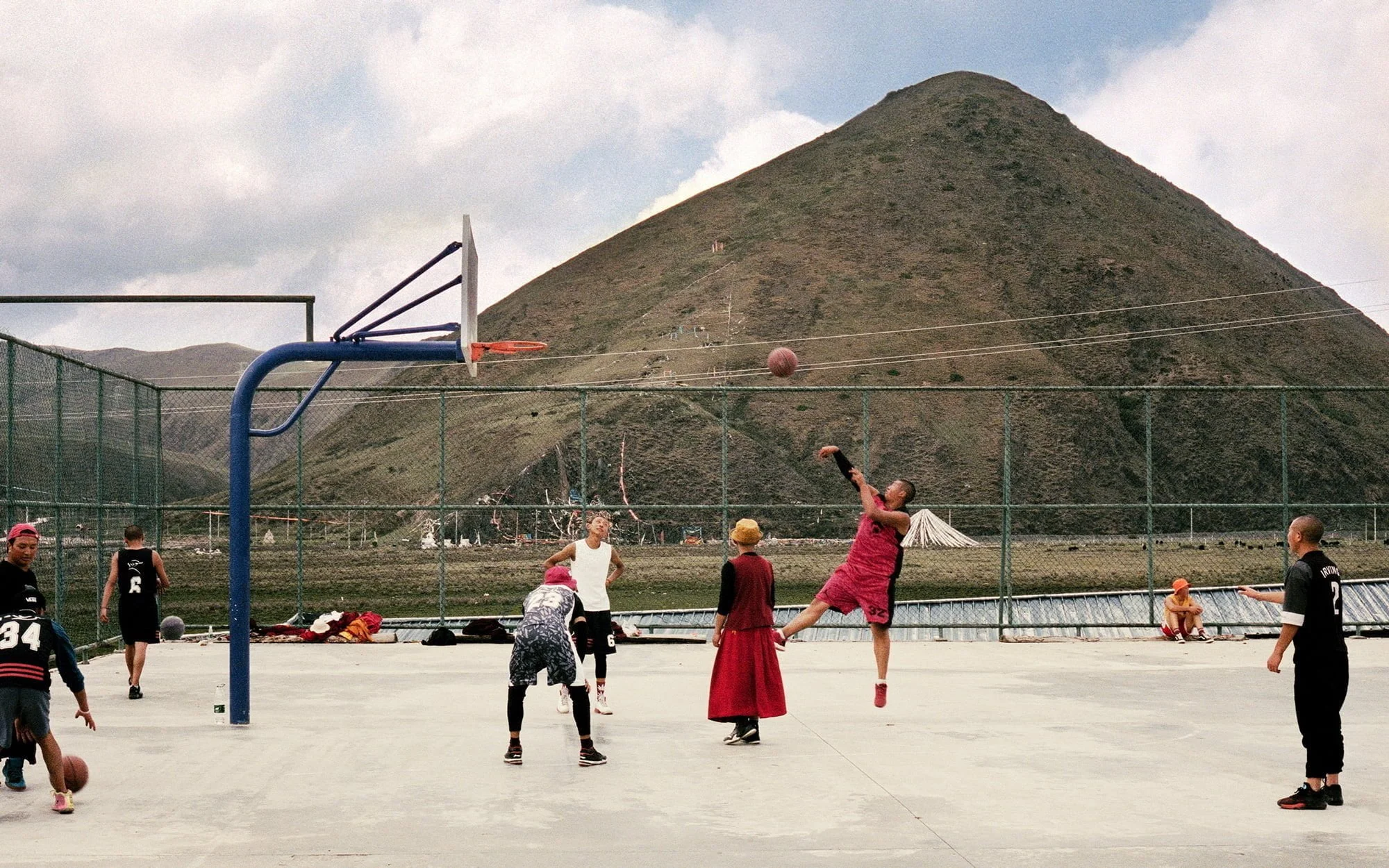Nightingales are synonymous with their beautiful song, but with populations declining in Britain, fewer people have the privilege of hearing it. That’s why folk musician Sam Lee is inviting listeners deep into the woods, after dark, to experience a unique musical collaboration – before it’s too late.
Most Friday evenings for me revolve around friends and drinking, but tonight I’m embarking on a quest to hear the song of a small, brown bird – in the wild. “They’re a barometer for our emotions,” Sam Lee, folk singer, and environmental campaigner, explains as thirty of us – different nationalities, ages, and stages – eagerly listen perched on homemade benches strewn around a crackling open fire. Although it’s still light, at 7pm, there’s a chill in the air. “Some people feel utter joy, but others grief or melancholy,” he continues.
Sam is talking about England’s increasingly rare nocturnal songster: the nightingale. It’s these plain-looking birds that we’ve come to hear sing with Sam and guests, in a seasonal concert organised by The Nest Collective.
Anticipation of hearing the birds has put a spring in my step all week. The event takes place in a permissive (private with granted access) woodland deep in the Sussex Weald – the largely wooded chunk of land between the chalky escarpments of the North and South Downs in southern England. It’s spring and the bluebells are so prolific my eyes take a while to adjust to the blur of purple. The exact location isn’t widely publicised to protect the fragile ecosystem, so finding it is an adventure and a privilege in itself. On the way, I ask two locals for directions. “Good luck,” they call as I stumble into the woods.
“The plight of the nightingale symbolises the urgency of the environmental crisis”
A singular species
Nightingales migrate to England from West Africa every April and May to mate when the males sing their hearts out all night. With only 5,500 remaining in the UK, the birds are more than a barometer for our emotions – they also represent our ecological woes. “The plight of the nightingale symbolises the urgency of the environmental crisis,” explains Sam, “in the thousands of years of our relationship with these birds [in the UK], we’re now in a palliative care stage.” Experts predict the species will disappear from the British countryside in the next 50 years. As the national bird of Ukraine, broader themes around migration and identity linger in the air, too.
Although celebrated in folk songs and poetry for centuries, it wasn’t until the 1920s that cellist Beatrice Harrison discovered that nightingales sing with people. While practising in her garden in Surrey one evening, she noticed the birds echoing her notes. Subsequent live radio broadcasts of Beatrice playing with nightingales became world-famous. Sam first sang with the birds in 2015, when BBC Radio invited him to make a show celebrating 90 years since Beatrice’s first broadcast.
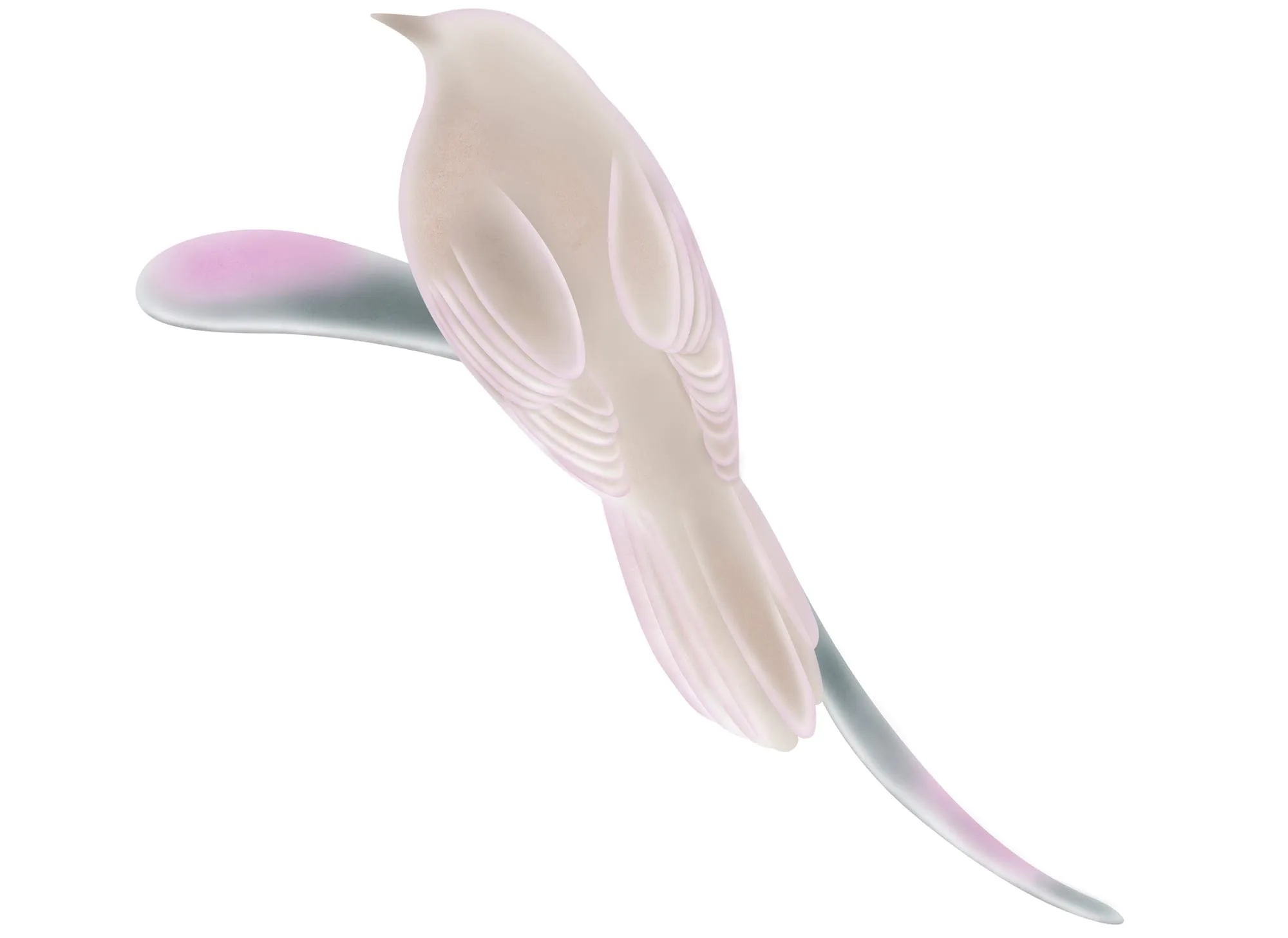
“We’ll head out in search of the nightingales when it’s dark, so we’ll spend the next few hours chatting, eating, and enjoying music. Turn your phone off. We’ll be holding you through tonight to unravel your sense of time,” Sam explains, having introduced other team members and guest musician Kate St John, an oboist who’s played with everyone from Van Morrison to Norma Waterson. Phones off, the group happily commits to total and utter presence.
“Before we settle in, let’s walk,” Sam declares, inviting us away from the make-shift base into the woods. There’s a help-yourself bar serving elderflower cordial, tea, and organic wine and beer, and a compost toilet for those that need it. We wander out like a merry troupe, chatting and drinking as we go. Pausing in a clearing, Sam continues, “Now it’s time to tune into deep listening – don’t just hear but listen. Let’s see how many different birds we can identify.”
“Like all good musicians, their skill is decorating silence”
As dusk falls, birdsong fills the air. The group, a mix of avid birders and novices, pick out blackbird, mistle thrush, robin, song thrush, and possibly, black cap. Forty-or-so gulls fly overhead to a chorus of ‘wow’ and ‘ahh’. Looking around, Sam explains how these carefully coppiced woods – the act of cutting back trees to expand the rootstock and create a mixed-height canopy – provide the ideal habitat for nightingales, which feed in the protective scrub.
Our Pagan roots
Back at the campfire, Sam continues to join the dots, “Our ancestors would have sat around a fire like this thousands of years ago, welcoming warmer evenings and the coming of spring as nightingales sang.” It’s May eve, adding another dimension to the lore; also known as Beltane, the night is an ancient Pagan celebration of fire and fecundity.
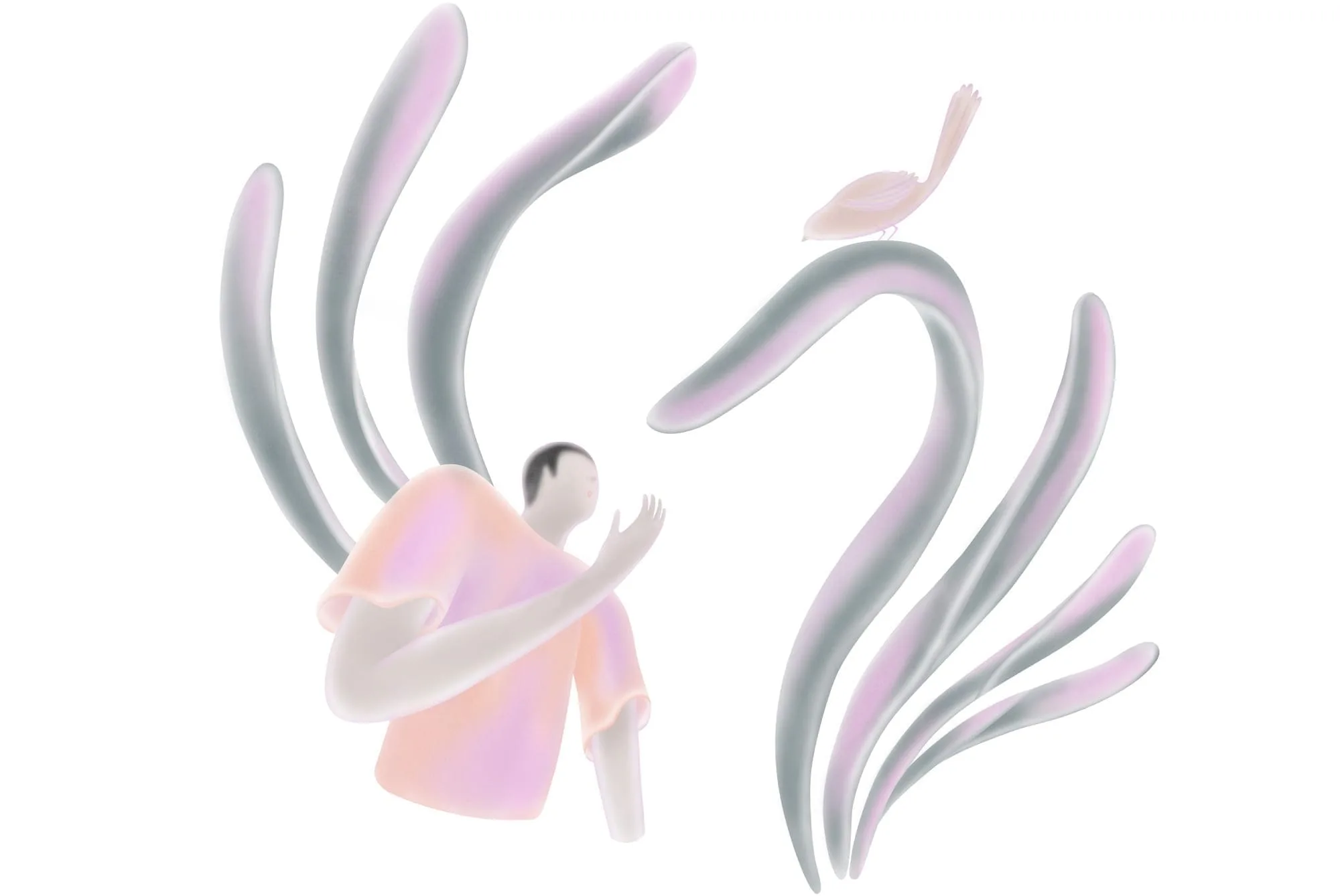
Over a feast of vegan curry and carrot cake (locally made), the group chats while edging nearer to the warmth of the open fires. Although I’m alone, it doesn’t take long to make new friends, exchanging why we’re here, whether we’ve heard nightingales before, and sharing excited anticipation for the night ahead. Sam warns us that the nightingales have been quiet for the last few nights, obvious anguish sweeping across his face as he pontificates why (perhaps because it’s so dry, reducing the birds’ food source and therefore energy).
Weaving through the group, he also explains how their size to sound ratio makes nightingales one of the loudest species in the animal kingdom and how they never repeat the exact phrase twice. “Like all good musicians, their skill is decorating silence,” he explains before launching into a repertoire of folk songs with Kate pausing occasionally to listen for any inkling of a nightingale song.
Midnight hike
Evening plummets into the night, and at some point, Sam decides it’s time to find the nightingales. Dictated by nature, every night is different (incredibly, this experience is organised most nights for two months), and tonight we must embark on a bit of a hike to find the birds. “There’s a new moon, so it’s dark out there. While we’re in the woods, stick close to the person in front and walk toe-first to heighten awareness of what’s underfoot. It’s how we would have walked before we invented hard-sole shoes.” Sam says as we line up to follow him into the darkness in silence.
Within moments, my senses come alive like nothing I’ve known before. There’s no restlessness, sniggering, or whispering in the group, so I suspect others feel the same; it’s a collective, meditative journey. Twigs snap and pop underfoot until we stagger over a stile into open ground. Here, chalk paths weave like glow worms across darkened fields, framed by the eery silhouettes of oak trees and hedgerows. A tawny owl calls, and cows bellow in the far distance. The further we go from the woods, the more I fear we may not hear the birds tonight.
“Perhaps our ancestors sang with nightingales thousands of years ago, on this very spot”
But then, out of the darkness and quiet, there’s an ear-tingling twittering, incongruous in the dead of night, that grows in volume as we near a copse. The song gets louder and louder until we’re as close as can be to one, then two nightingales. The sound becomes all consuming, and unfathomable – more like an orchestra than a couple of small birds.
Listening in the dark
We gather in a circle, some sat, others lying back, listening intently to the enchanting chattering, whistling, shrilling, whirring, and singing. The darkness heightens senses, and it’s impossible to think of anything other than the nightingales.
Soon, Sam and Kate join in, responding to the birds with song and the oboe. It takes a while for the musicians to get into sync, but after some tuning in, it feels as though the birds respond to the notes, or vice versa. Either way, it’s an ensemble like nothing I’ve heard or seen before. A unique cross-species connection distilled in respect and a shared love of song.
Clouds part to reveal a bejewelled sky. Breathing deepens, and someone starts to snore lightly. Heavy with tiredness, it’s hard to know what’s real and what’s figurative. I find my mind drifting to the past and wondering whether our ancestors sang with nightingales thousands of years ago, perhaps on this very spot. The thought makes me want to curl up under the stars and sink deeper into the earth.
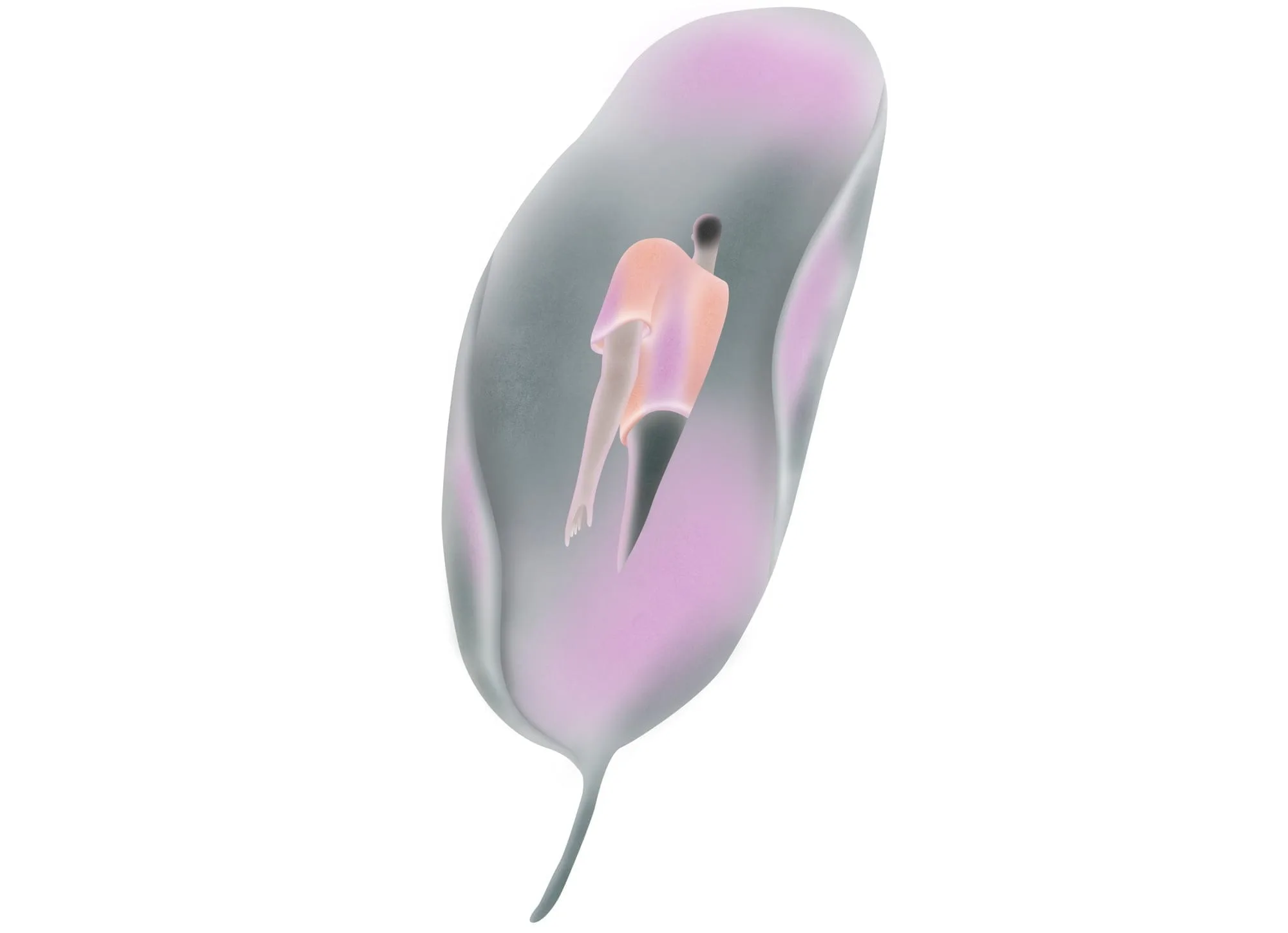
After a sultry rendition of Dream A Little Dream of Me, Sam and Kate usher us onto our feet to head back to base. I’m mesmerised by the moonless sky – until I stumble down a rabbit hole, triggering a ripple of kind-natured giggles from my companions.
“How does everyone feel?” Sam whispers as we gather in the final field before it’s time to part ways. Enjoying the silence, I’m reluctant to speak up, but the words come to me as quickly as the shooting stars overhead: euphoric and empowered. Because I now know there’s a wilderness out there not only needing our protection but inviting us to commune, play and recharge around the clock.
Nightingales and more
In addition to singing with nightingales, the Nest Collective organises a wide range of activities celebrating nature and music, including nature pilgrimages and a campfire club.
ExploreFolk musician Sam Lee has written a book delving into the magic of these magnificent creatures: ‘The Nightingale: Notes on a songbird’.
Read the book
